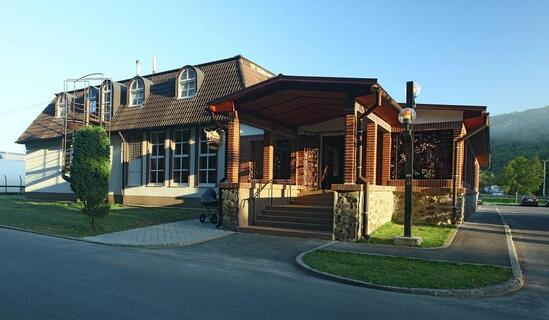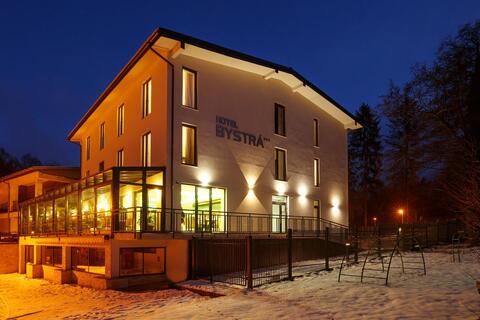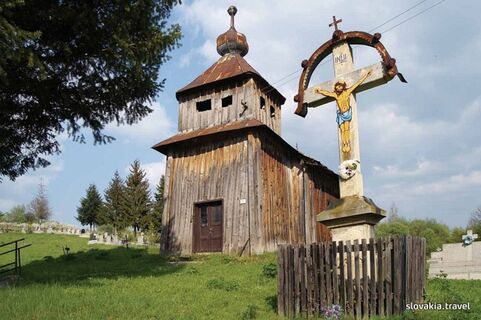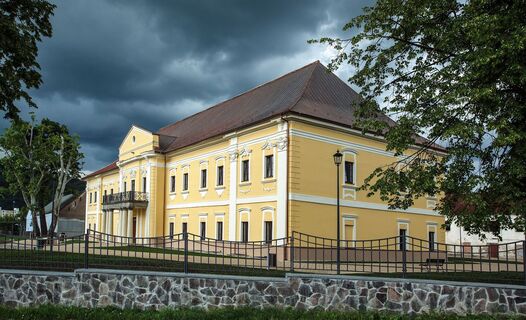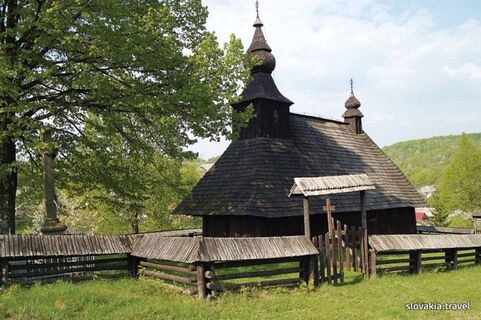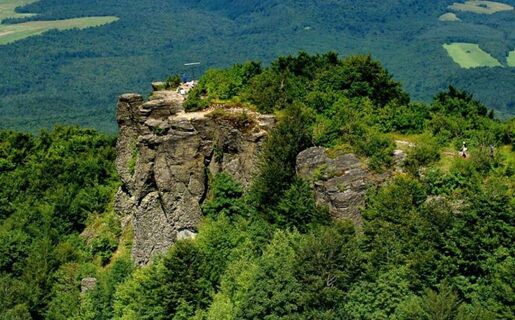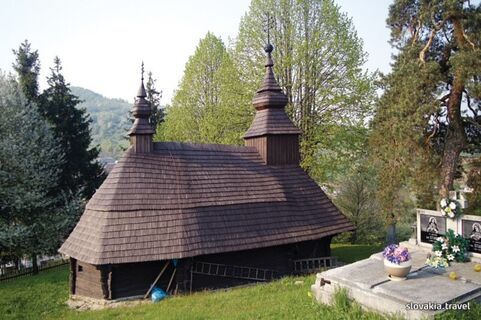Ruský Potok - church of St. Michael the Archangel
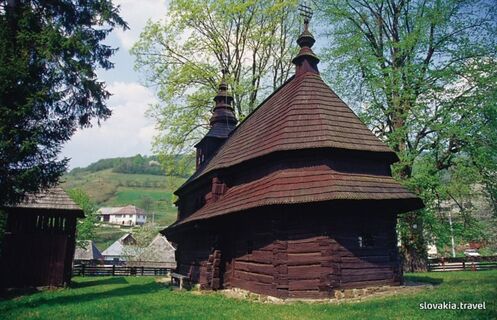
The Greek Catholic wooden church of St. Michael the Archangel from 1740. It is a three-space church of the Boyko type. The wooden belfry situated next to the church is from 1956. Iconostas is from the time when the church was built. Liturgical books printed in cyliric in Lvov and other Ukrainian towns in the mid-17th century are especially valuable.







